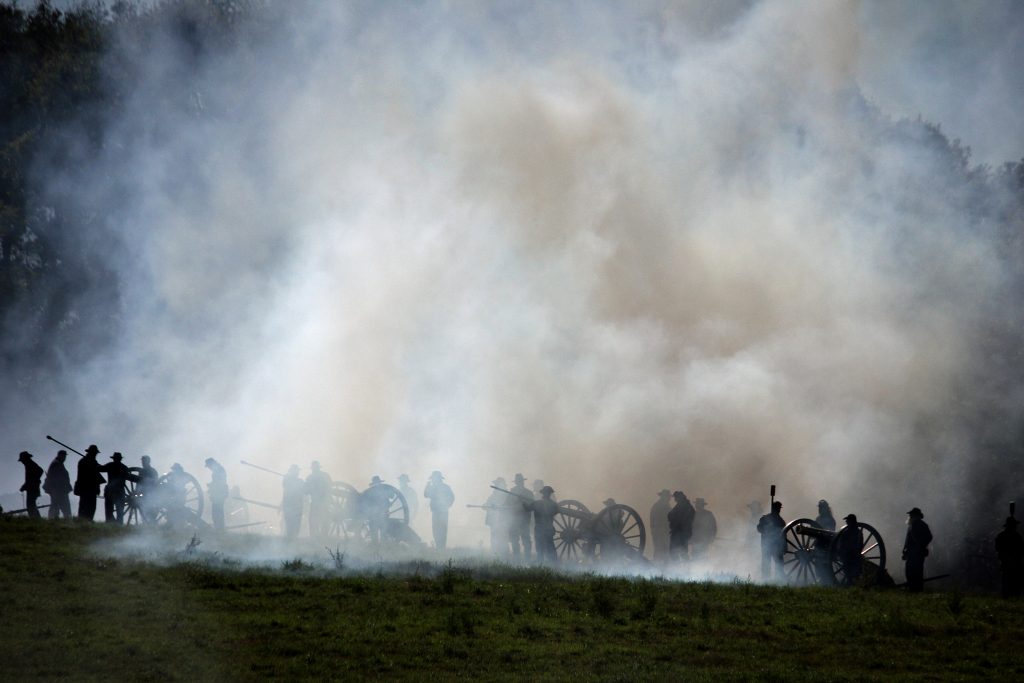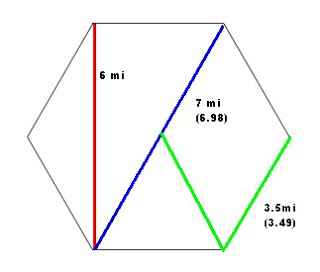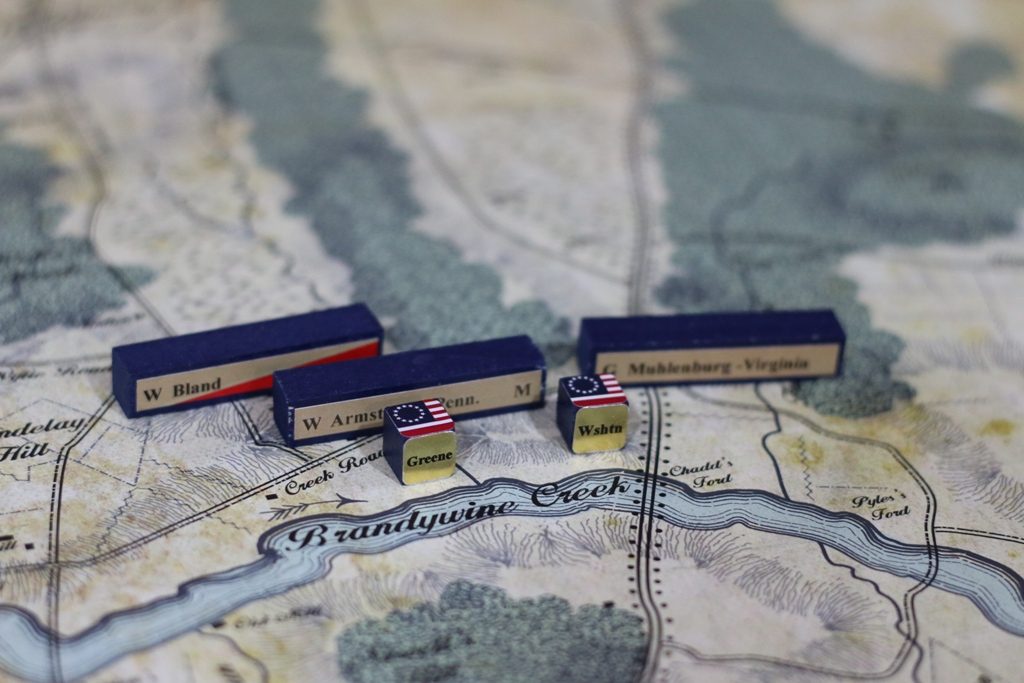
I’m a big fan of Columbia games. They make great products. Their unique design feature is hidden strength with rotating blocks. This generates a lot of uncertainty in the game. Not only is this ‘Fog-of-War’ more realistic, it is more fun! It’s a win-win.
Does Pub Battles simulate Fog-of-War? Yes! It does not use rotating blocks but it does model many aspects of real battlefield Fog-of War. I thought it would be fun to compare / contrast Pub Battles with the Columbia system.
Similarities
What do these two systems have in common?
Hidden blocks. You can see the enemy moving pieces around. Unless you actually contact and fight, (or the artillery bombards) they remain hidden. What does the enemy have? Artillery? Infantry? Cavalry? You can only guess.
Differences
Variable Strength This is the key feature to Columbia Games. Is the piece a strength of 1 or 4? As you would expect, it is much easier to kill a 1. A 1 strength defender also can’t do as much damage to you as a 4 can. This effect compounds with more units involved. Let’s say you attack a hex with 4 blocks in it. If they are all 1s, the enemy only rolls 4 dice which hit on 5-6 average. (1.33 average losses) If they are all 4’s, they roll 16 dice hitting on 5-6, generates 5.33 average losses!
So you don’t know if you are walking into a quick overrun or a hornet’s nest of trouble. As you could imagine, players can bluff and threaten with empty stacks. You can also be surprised when you find out what you thought was just a bluff was real.
Pub Battles doesn’t use 4 step, rotating units. Their pieces do flip to spent status. This makes them technically 2 step units. Hits also apply in a cumulative fashion. The first hit flips the piece. Second hit forces it to retreat. The third hit destroys the piece. In this way, they are effectively 3 step units. You just don’t have to rotate them.
There is another wrinkle. Pub Battles pieces come in grades: regulars, elite and militia. The elite absorb their first hit with no effect. The militia are the opposite. They suffer an additional hit. So effectively, the elites become 4 step units while the militias are 2s.
This is further modified by the status of the piece. Is it fresh or spent? Spent pieces are already hit once. So it normally takes 3 hits to kill a regular piece. If it is already spent, it only takes 2 hits to kill it. So a spent militia is effectively a 1 strength piece.
An optional rule that we like, is to turn spent pieces face down. This keeps their status hidden from the enemy. So if you are playing with this rule, Pub Battles essentially does the same thing as Columbia’s rotating blocks. They just do it in a different way. Same result: you are attacking a hidden block. It could be a spent militia (str 1) or a fresh elite (str 4). Your guess.
Timing
In addition to these unknowns, Pub Battles players must also face an uncertain turn sequence. Rather than the standard I-Go-You-Go format, your pieces move by command in random order by chit pull. This results in a very dense fog of consternation. So you don’t know when the enemy will move. You don’t even know when your troops will move.
If you think about the real world, this makes sense. If you order I Corps to occupy the hill, they will but not immediately. It takes time for the orders to get passed down the ranks, for troops to get ready and actually make the move. How long? What is the enemy doing during that time? Rest assured they aren’t just sitting around. What if the enemy has designs on that same hill? Will they get their first?
Everybody is moving all the time in a real battle. You can order an attack but it’s anybody’s guess as to how and when this actually goes down. Much of the details are out of your hands as the Commander. Will your troops move quick and catch the enemy by surprise? Will the enemy be able to bring up artillery support just in the nick of time? Maybe. These are all unknowns. Fog-of-War.
What can you do as the commander? Do you have any control? Yes. You can try to alter the timing. Is it imperative that your boys move first to take the hill? Roll to jump ahead in sequence. Do you always want to move first? No. Sometimes it’s best to get the enemy to move first. Then you can analyze their defense and attack their weakness.
Does all this chaos make you feel uneasy? It’s not very clean and orderly is it? It’s just like real life. Messy. Like real command.
Do you want more Fog-of-War? Add in the Pub Battles optional written orders and live players for the sub command positions. With an Umpire and double blind play, you won’t even be certain where your forces are or if they are doing what they are supposed to be doing. Is it any wonder that Murphy’s Law, FUBAR and SNAFU came from the military?
Welcome to command.


 Can real command issues be a fun game? Are they compatible?
Can real command issues be a fun game? Are they compatible?









